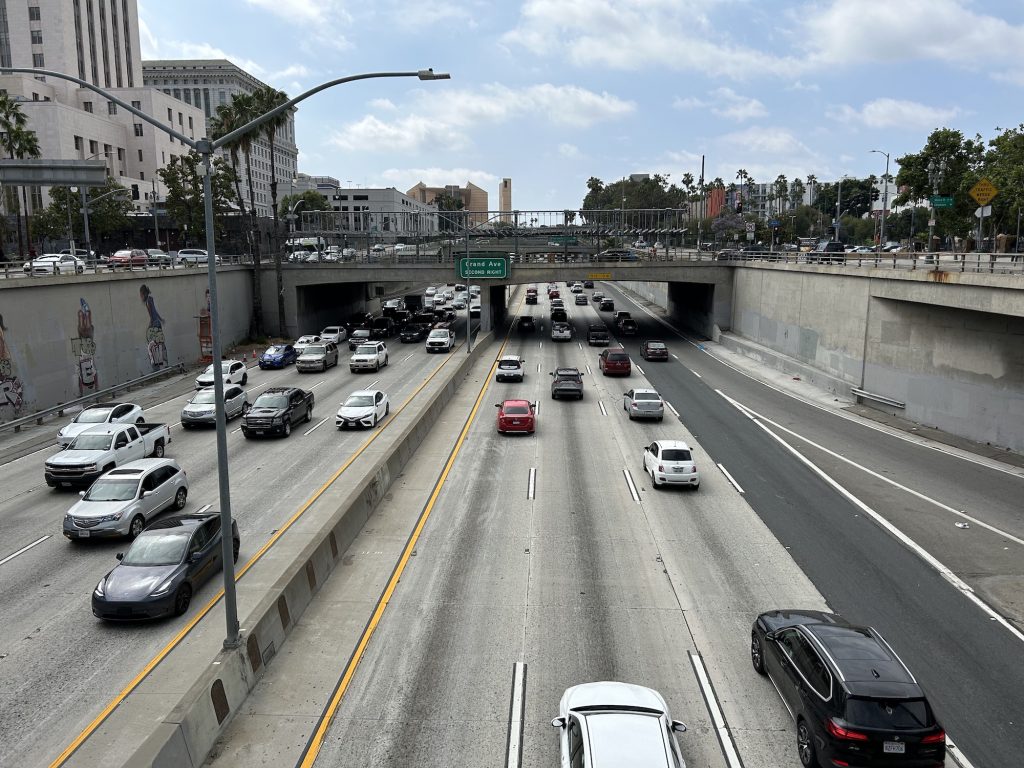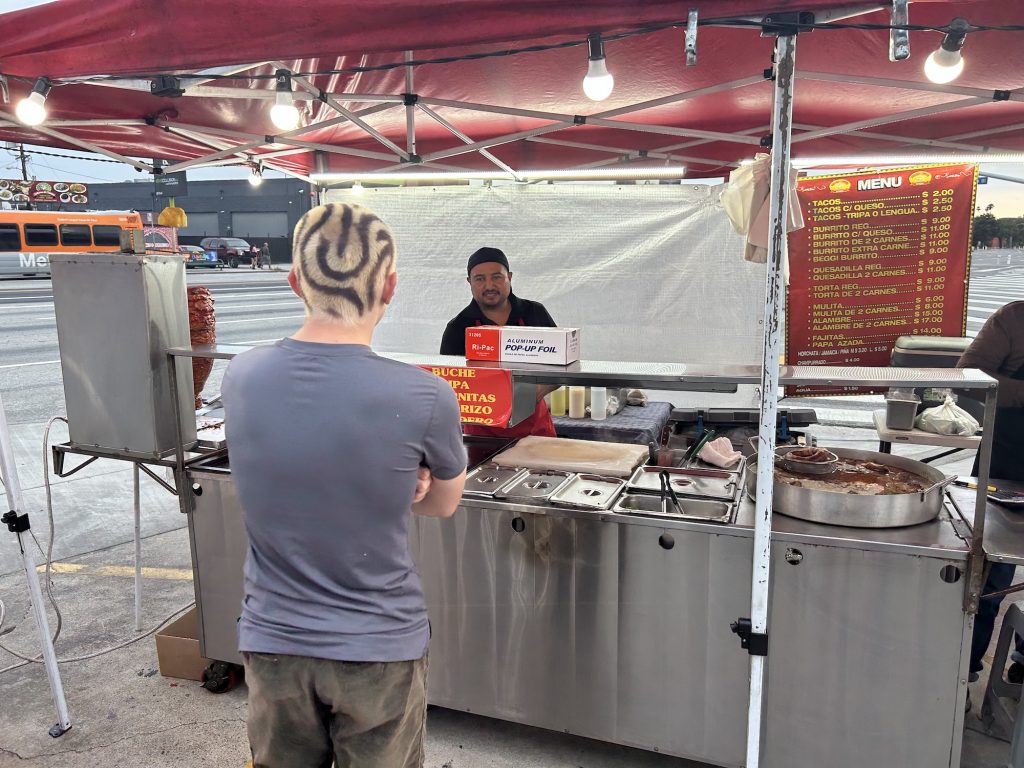
Lots of people talk about Los Angeles as a city made for cars, but after spending a few days there this week, I think it’s more about roads than cars. That might seem like a quibble, a semantic difference, but as I see it, cars are merely a means of conveyance, while the way you build roads changes everything about the built environment and how you choose to interact with people.
For instance, any visitor to Los Angeles immediately appreciates how you can’t really go anywhere without a car. You can’t get food, go to a place, or visit with people without driving there. In fact, it seemed to me that just about everything in Los Angeles is about 30 minutes away, because if it’s farther, you drive on more open freeway. Shorter, you take more clogged city streets. Everything averages out to about 30 minutes.
Once you arrive at a location, it might be part of a limited walkable environment, like a mall, a small neighborhood of shops, or a collection of museums. But unlike most large Eastern cities, like New York or Chicago, it’s difficult to move from one urban environment to another without a car. When you do try, it is generally unwelcome to pedestrians, and usually a long walk because there are so many broad roads. Even in areas with relatively little traffic, you always encounter four lane roads with parking on either side, and blocks tend to be long, so that buildings have big spaces for shrubbery or signs. No quick strolls to the market or cafe down the street for you!
Everywhere you go, you’re aware of the road. As a driver you’re constantly changing lanes, navigating traffic, working out your next turn, since you likely have to change roads three or four times on your way to somewhere – there are few straight shots in Los Angeles. As a pedestrian, the road means standing on lots of corners, waiting for traffic to subside, because jaywalking across six lanes takes too long and cars move dangerously fast. It’s more fun (and safer) to stay within your mall area rather than venture across the street, let alone three or four of them.
After a couple days, I began to think of Los Angeles as an archipelago city. Stores, museums, homes, hotels, are a series of islands, separated by a constantly flowing gulf streams of roads, and cars are the boats that get us from one island to another. You could swim from one island to another, but it isn’t easy, and most islands you want to get to are so far, you need a boat to get there anyway.
Moving in this environment, I began to wonder about the value of relational spaces in Los Angeles. What does it matter that one building is next to another? For instance, why does it matter that all the rich people build houses in Bel Air, rather than some in Skid Row, some in Inglewood, and so on? Of course, there are certain environmental differences, like Bel Air has nice hills to live on that provide views and some element of seclusion, as well as proximity to offices in movie studios nearby in Burbank and Hollywood. So, I suppose there is some value to location.

But one spot, a taco stand on Venice and La Cienega Boulevards really got me thinking. Here, every evening, a pair of guys set up a pair of folding tents, a griddle, rotisserie and a bunch of tables to sell incredible tacos in a parking lot. Then they take it down before sunrise. People pull up in their cars, get out, eat tacos, leave. It is essentially a restaurant without walls – but set up on a concrete pad in front of a auto mechanic that’s closed for the day. There are no other stores or businesses open nearby, and the three other corners at the intersection are vacant. Except for the fact that Venice and La Cienega Boulevards are busy roads, this concrete island wouldn’t have any value. The road, not the neighborhood, was what was important.
The hotel we stayed in, a Hilton in Culver City, was surrounded by roads. On one side was The 405, on another was Centinela Avenue, a six lane road with a median that at no point did I ever see enough traffic to justify four lanes, let alone six. Why would you build such a wide road that nobody uses? Unless maybe a wider road signals to people that you could easily come here? This remained a mystery to me.
Roads and the cars that drive on them have a mystical power in Los Angeles. In fact, just as we were visiting, Culver City’s council was deciding to scale back a “complete streets” project, where pedestrians and bikes would be given more space on the road, squeezing cars to a smaller space. Culver City drivers, attached to the idea that they can go anywhere in their vast archipelago as fast as possible, objected to the slightly slower drive times complete streets forced them to contend with.
Maybe it would have hurt the taco vendors too? After all, if it isn’t a quick 15 minute ride from West Hollywood or Huntington Park to get your favorite Culver City tacos, why go? And what’s the likelihood that West Hollywood or Huntington Park would have great tacos of their own?
That last part is meant to be somewhat rhetorical. I mean, why can’t those places have great tacos? But that’s not the way Los Angelenos live in their city. Consumers expect to drive and business owners expect people to drive to them – everything is in relationship to the road.